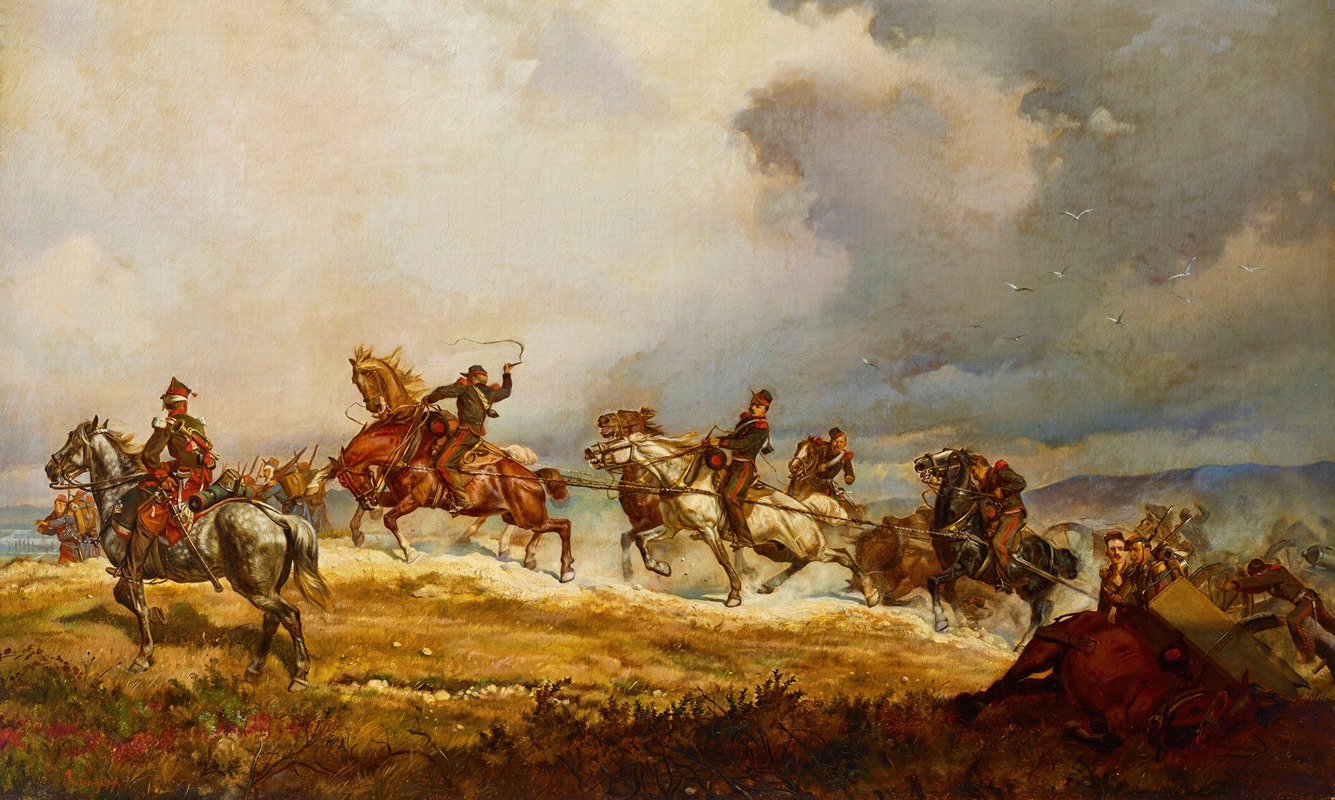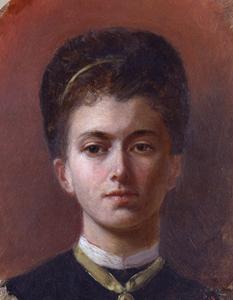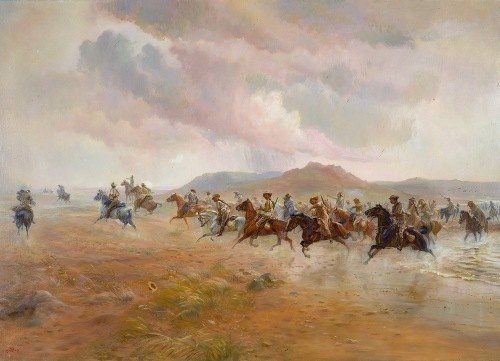

Elizabeth Southerden Thompson, Lady Butler was a British painter, who specialised in painting scenes from British military campaigns and battles, including the Crimean War and the Napoleonic Wars. The Roll Call (purchased by Queen Victoria), The Defence of Rorke's Drift, and Scotland Forever!, showing the Scots Greys at Waterloo (Leeds Art Gallery), are among her notable works. She wrote about her military paintings in an autobiography published in 1922: "I never painted for the glory of war, but to portray its pathos and heroism". She married Sir William Butler, becoming Lady Butler.
Born at the Villa Claremont in Lausanne, Switzerland, Butler was the daughter of Thomas James Thompson (1812–1881) and his second wife Christiana Weller (1825–1910). Her sister was the noted essayist and poet Alice Meynell. Elizabeth began receiving art instruction in 1862, while growing up in Italy. In 1866 she went to South Kensington, London, and entered the Royal Female School of Art. She became a Roman Catholic along with the rest of the family after they moved to Florence in 1869. While in Florence, under the tutelage of the artist Giuseppe Bellucci (1827–1882), Elizabeth attended the Accademia di Belle Arti. She signed her works as E.B.; Elizth. Thompson or Mimi Thompson (she was called "Mimi" from her childhood).
Initially Butler concentrated on religious subjects like The Magnificat (1872), but upon going to Paris in 1870 she was exposed to battle scenes from Jean Louis Ernest Meissonier and Édouard Detaille, and switched her focus to war paintings. With the painting Missing (1873), a Franco-Prussian War battle scene depicting the common soldiers' suffering and heroism, she earned her first submission to the Royal Academy. Butler's painting The Roll Call, which depicted a line of soldiers worn out with conflict, was shown in 1874 at the Royal Academy Summer Exhibition and became so popular that a policeman had to be stationed next to the painting in order to regulate the crowds that came to see it. Butler wrote that after the opening of the Summer Exhibition she awoke to find herself famous.
Her fame increased as the paintings toured Europe, along with photographs of Elizabeth, she gained even more notice because people found out that she was both young and pretty, something normally not associated with painters of battle scenes. It also helped that during this time there was a huge swell of Victorian pride and romanticism for the growing British Empire. While Lady Butler's topics reflected such romanticism, her paintings were generally realistic in detail with aspects such as confusion, mud and exhaustion being accurately portrayed. Her works tend to focus on British troops shown in action, or shortly after it, but avoiding scenes of hand-to-hand combat. The troops are often shown as their opponents might have seen them, but relatively few of the opponents themselves are shown.
In 1879, Butler came within two votes of becoming the first woman to be elected as an Associate Member of the Royal Academy (apart from two founder Members, Mary Moser and Angelica Kauffman; ultimately, the first female Associate Member was Annie Swynnerton, elected in 1922, and the first full Member was Laura Knight in 1936).
After her marriage in 1877 to Sir William Francis Butler, a distinguished officer of the British Army, from Tipperary, Ireland, Butler traveled to the far reaches of the Empire with her husband and raised their six children. Butler also did some black and white illustrations, including of poems by her sister, Alice Meynell, and of works by Thackeray. She exhibited her work at the Palace of Fine Arts and The Woman's Building at the 1893 World's Columbian Exposition in Chicago, Illinois. Her daughter, Elizabeth Butler, married Lt.-Col. Randolph Albert Fitzhardinge Kingscote (b. 6 Feb 1867, d. 8 Dec 1940) on 24 July 1903.
On her husband's retirement from the army, she moved with him to Ireland, where they lived at Bansha Castle, County Tipperary. She showed pictures at the Royal Hibernian Academy from 1892. Among the paintings that she took with her to County Tipperary was a set of water-colours that she had painted while with her husband in Palestine. During the Irish Civil War they were transferred to her daughter in Gormanston Castle for safekeeping, but were almost all destroyed later by German bombs in London during the Second World War.
Lady Butler was widowed in 1910, but continued to live at Bansha until 1922, when she took up residence with the youngest of her six children, Eileen, Viscountess Gormanston, at Gormanston Castle, County Meath. She died there shortly before her 87th birthday and was interred at nearby Stamullen graveyard.
Butler was included in the 2018 exhibit Women in Paris 1850-1900.

